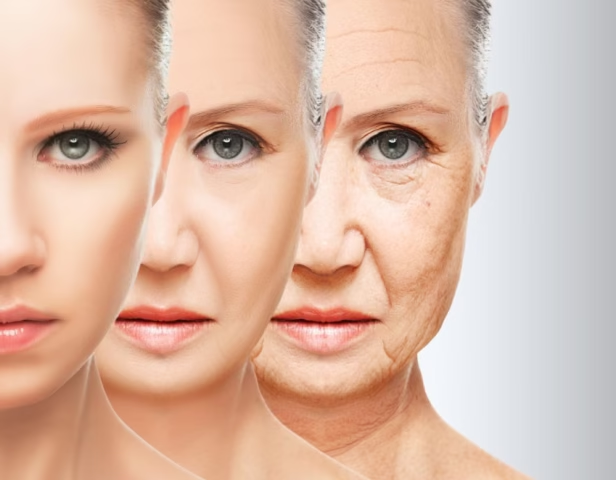Dealing with Aging
Live well into your later years as you age with practical tips backed by science. Find balance in health, community, and financial preparedness.

Get ahead of the curve with global trends on aging. Learn how society, tech, and lifestyle are reshaping what it means to grow older.
Aging constitutes a complex, multidimensional biological and psychosocial phenomenon that progressively unfolds over the human lifespan.
While fundamentally inescapable, the manner in which aging is experienced varies widely across individuals and populations due to a confluence of genetic predispositions, environmental exposures, lifestyle behaviors, healthcare access, and sociocultural determinants.
In recent decades, increased longevity combined with declining fertility rates has catalyzed an unprecedented demographic transformation, manifesting in the rapid global expansion of the older adult cohort.
This demographic realignment has profound implications for health systems, economic sustainability, intergenerational relationships, and societal norms concerning aging.
This article seeks to elucidate the intricacies of aging from an interdisciplinary perspective.
It synthesizes insights from gerontology, public health, psychology, sociology, and policy studies to explore biological and cognitive transformations, resilience-building, lifestyle optimization, technological innovations, and systemic interventions. Moreover, it provides comparative international data on aging populations and prescriptive recommendations to promote equitable and fulfilling aging trajectories.
Key Takeaways
- Aging is an inevitable, yet highly heterogeneous process shaped by intersecting biological, psychosocial, and structural variables.
- Emotional and cognitive adaptability are essential for successful aging and can be cultivated across the lifespan.
- Cultural narratives significantly influence the societal valuation of aging and the treatment of older adults.
- Preventive health behaviors, sustained social engagement, and informed financial planning can optimize aging outcomes.
- National governments are reassessing public health, pension, and infrastructure systems to respond to aging demographics.
- Emerging technologies are enhancing autonomy and quality of life among older adults.
- Adopting a strengths-based perspective and lifelong learning ethos can transform aging into a phase of renewed purpose.
Understanding Aging: Physiological and Cognitive Dimensions
Aging entails progressive morphological, functional, and cognitive modifications. Physiological aging encompasses systemic decline in organ function, cellular senescence, and hormonal fluctuations, while cognitive aging may involve gradual reductions in working memory, processing speed, and executive functioning. Importantly, these changes are not uniformly negative nor universally experienced; many older adults maintain high levels of functioning and autonomy well into advanced age.
Common Somatic Alterations:
- Diminished bone mineral density and articulation mobility
- Sarcopenia and compromised neuromuscular coordination
- Basal metabolic rate reduction and homeostatic variability
- Sensory deficits, notably presbyopia and presbycusis
- Immunosenescence and increased vulnerability to infection
- Attenuated reflexes and proprioceptive acuity
Neuropsychological Manifestations:
- Episodic memory decline and deceleration of information retrieval
- Decreased attentional bandwidth and task-switching efficacy
- Elevated risk of affective disorders post-retirement or bereavement
- Heightened desire for intersubjective connection and emotional validation
De-pathologizing these normative shifts and promoting proactive cognitive engagement can mitigate age-associated decline and enhance subjective well-being.
Emotional and Cognitive Resilience
Psychological resilience—defined as the capacity to navigate adversity with adaptive functioning—is a pivotal determinant of successful aging.
Older adults may confront a constellation of existential transitions, including identity renegotiation post-career, spousal loss, and declining health.
Lifelong cultivation of adaptive coping mechanisms, self-efficacy, and social connectivity significantly buffers these stressors.
Mechanisms to Foster Resilience:
- Cultivation of robust interpersonal networks
- Active participation in religious, philosophical, or cultural communities
- Daily mindfulness practices and expressive writing
- Intellectual curiosity and sustained educational engagement
- Generative roles such as mentoring or civic volunteering
- Therapeutic intervention in instances of affective dysregulation
Prioritizing geriatric mental health services and de-stigmatizing psychological care are essential for comprehensive elder well-being.
Lifestyle Optimization in Aging

Health-promotive behaviors across the life course are predictive of aging quality. Lifestyle interventions—ranging from nutritional optimization to stress modulation—can attenuate physiological deterioration, forestall chronic morbidity, and sustain functional independence.
Evidence-Based Practices:
- Adherence to cardioprotective diets (e.g., Mediterranean, DASH)
- Engagement in multicomponent exercise regimens (aerobic, resistance, flexibility)
- Consistent sleep hygiene and circadian regulation
- Minimization of dietary additives, refined sugars, and intoxicants
- Effective chronic disease self-management
- Periodic medical surveillance and early diagnostic screening
Elder participation in physically and socially stimulating activities such as gardening, aquatic aerobics, and dance therapy reinforces holistic health outcomes.
Social Integration and Existential Meaning
Social capital and purpose-driven living are empirically associated with lower mortality, reduced cognitive decline, and enhanced emotional well-being among older adults. Retirement and empty-nesting may diminish traditional sources of identity and belonging, necessitating the construction of novel frameworks for engagement.
Strategies to Augment Social and Existential Fulfillment:
- Membership in thematic or recreational collectives
- Enrollment in academic or creative learning environments
- Utilization of ICTs for relational maintenance
- Structured volunteerism and community service
- Participation in intergenerational dialogue and knowledge exchange
Experiencing a sense of utility and interdependence serves as a protective factor against psychological morbidity in aging populations.
Gerofinance: Navigating Economic Security in Later Life
Financial preparedness is integral to psychosocial stability in aging. Yet, economic vulnerability remains a salient concern among retirees, particularly in contexts of inadequate pension coverage or rising healthcare expenditures.
Gerofinancial Planning Guidelines:
- Early and diversified asset accumulation
- Strategic portfolio management with risk mitigation
- Familiarity with national retirement entitlements and benefits
- Consideration of long-term care insurance and life coverage
- Legal foresight via testamentary instruments and healthcare directives
- Professional estate consultation and intergenerational financial literacy
Public policy must promote inclusive financial education and safety nets to accommodate the heterogeneity of aging experiences.
Health Systems and Demographic Aging
Aging demographics are exerting systemic pressure on global health infrastructures, necessitating recalibration of service delivery models, geriatric training, and fiscal sustainability mechanisms.
Table 1: Top Nations by Elderly Population Share (2024)
| Country | % Population 65+ |
|---|---|
| Japan | 29.1% |
| Italy | 24.5% |
| Germany | 23.8% |
| Finland | 22.5% |
| Greece | 22.4% |
Table 2: Projected Expansion of Older Adults by 2050
| Country | 2024 (% aged 65+) | 2050 Projection (%) |
|---|---|---|
| South Korea | 18.4% | 38.1% |
| China | 14.5% | 30.0% |
| USA | 17.2% | 22.0% |
| Brazil | 10.3% | 23.5% |
| India | 7.4% | 14.2% |
Responsive governance models must prioritize long-term care financing, age-inclusive urban planning, and caregiver workforce development.
Technological Interventions in Aging
Digital health and assistive technologies are revolutionizing aging by promoting autonomy, real-time monitoring, and enhanced social connectivity. Nevertheless, equitable access and digital literacy remain critical barriers to adoption.
Technological Innovations:
- Biometric wearables for physiological tracking and emergency response
- AI-integrated home automation and reminders
- Telemedicine platforms for decentralized care
- Virtual communities for socialization and continuing education
- Assistive robotics, hearing amplification, and mobility augmentation
Public-private partnerships should invest in elder-centric tech design and digital inclusion programs to ensure broad utility.
Cultural Paradigms of Aging
Cultural epistemologies profoundly shape societal responses to aging.
Comparative analysis reveals diverse constructions of elderhood, ranging from reverence and familial integration to marginalization and institutionalization.
Cross-Cultural Illustrations:
- Japan: Confucian-informed filial piety underpins elder reverence and intergenerational cohabitation.
- United States: Individualistic ethos often results in decentralized, institutional eldercare systems.
- India: Familial caregiving remains normative, though urbanization challenges traditional frameworks.
- Sweden: Universal welfare provisions support autonomy but may foster social isolation.
Cultural competency in policy design and service provision is essential to address the pluralistic needs of aging citizens.
Actions to slow down Aging
https://x.com/i/status/1923013696432828536
1. Fasting
Your body can’t enter “repair” mode if you eat every 2 hours.
When you fast, autophagy is triggered (in Greek, it means “self-eating”).
Autophagy is the process where old and toxic proteins are destroyed. The benefits can be life-changing.
2. Move More
Not moving can cost you years of your life.
Humans were never meant to sit for 8 hours working and spend another 16 resting.
Here’s what happens when you don’t move enough.
3. Anti-Aging Supplement Stack
• Resveratrol • NMN • Berberine (nature’s metformin) Let’s break down how they help:
Resveratrol
One of the most promising compounds in anti-aging research.
It activates sirtuins—”longevity genes” that repair DNA and enhance cell survival. Found in red wine, grapes, and berries, it’s nature’s way of slowing the aging clock.
NMN (Nicotinamide Mononucleotide):
A key building block for NAD+,
which: • Fuels energy • Repairs cells • Supports longevity NAD+ declines with age, but NMN helps restore it.
Berberine
Dr. Sinclair suggests metformin, a drug for people suffering from type 2 diabetes, but he also talks about berberine…
It delivers almost the same results, without metformin’s side effects.
It’s nature’s secret to controlling your blood sugar and insulin levels.
4. Cold and Heat Stress
Cold exposure burns fat and strengthens your mitochondria.
Heat exposure boosts your heart health and triggers cellular repair. But of course, there are more benefits hiding.
5. Fix Hair Loss
https://x.com/i/status/1923013693899407577
David revealed a secret method to stop hair loss and grow new hair.
PLUS if you apply it to your skin, it reduces wrinkles… And it’s so simple, you’ll wish you started sooner.
FAQs on Aging
1. Can behavior modulate the pace of aging?
Indeed. Lifestyle interventions have demonstrable effects on the rate of biological aging and morbidity compression.
2. What constitutes an optimal dietary regimen for older adults?
Diets abundant in antioxidants, fiber, unsaturated fats, and lean proteins, such as the Mediterranean pattern, support systemic homeostasis.
3. How can cognitive function be preserved?
Neuroplasticity is enhanced through intellectual engagement, physical activity, and social interaction.
4. What differentiates normative memory lapses from pathological dementia?
Transient forgetfulness does not disrupt daily function, whereas dementia involves persistent and progressive cognitive impairments.
5. What are prudent financial strategies for aging individuals?
Diversified savings, strategic investment, insurance acquisition, and estate planning constitute key safeguards.
6. Are emotional changes inevitable with age?
While emotional shifts can occur, proactive engagement and mental health support mitigate negative trajectories.
7. Is there an age limit to health habit adoption?
No. Initiating healthy behaviors at any age yields measurable improvements in quality of life and longevity.
Conclusion
Aging, when approached with strategic intent and structural support, need not signify decline. Rather, it may serve as a stage of psychosocial flourishing, intellectual engagement, and community integration. Through interdisciplinary interventions, inclusive policy reforms, and the deconstruction of ageist ideologies, societies can foster environments in which older adults thrive. Reconceptualizing aging as a dynamic and valuable life phase invites both individual fulfillment and collective resilience in an aging world.
References
- World Health Organization. (2023). “Ageing and health.” https://www.who.int/news-room/fact-sheets/detail/ageing-and-health
- United Nations. (2022). “World Population Ageing.” https://www.un.org/development/desa/pd/news/world-population-ageing-2022
- Mayo Clinic. “Healthy aging.” https://www.mayoclinic.org/healthy-lifestyle/healthy-aging
- National Institute on Aging. “Cognitive Health and Older Adults.” https://www.nia.nih.gov/health/cognitive-health-and-older-adults
- Pew Research Center. “Global Aging.” https://www.pewresearch.org/global/2020/01/30/aging-in-the-21st-century/
- Harvard Health Publishing. “Tips for aging well.” https://www.health.harvard.edu/staying-healthy/tips-for-aging-well
- OECD. “Elderly population data.” https://data.oecd.org/pop/elderly-population.htm
- AARP. “The Future of Aging.” https://www.aarp.org/research/topics/life/info-2020/future-of-aging.html


I liked the part about technology helping older adults. What’s one simple tech tool you think every senior and even the younger people should try?
Voice assistants like Alexa, Siri, video calling apps like Facetime, WhatsApp & Zoom, Fitness Trackers, Emergency Alerts, Smart Home Devices etc are equally good tools for seniors as well as for younger people. Please have a look at “Smart Sleep Technology-Rest better with Innovation” to get an idea about new technology and smart beds especially for people with sleep problems. Now people are controlling all of their home appliances through certain apps in their smart phones.
I?¦m no longer certain the place you are getting your information, but good topic. I must spend a while studying more or understanding more. Thank you for great information I was in search of this information for my mission.
WONDERFUL Post.thanks for share..more wait .. …
Thanks for some other informative web site. The place else may I get that kind of info written in such a perfect method? I’ve a mission that I am simply now working on, and I have been on the look out for such information.
Hey very cool site!! Man .. Beautiful .. Amazing .. I will bookmark your web site and take the feeds additionally?KI’m happy to search out a lot of useful information here in the publish, we need work out more techniques in this regard, thanks for sharing. . . . . .
I am often to blogging and i really appreciate your content. The article has really peaks my interest. I am going to bookmark your site and keep checking for new information.
Perfectly pent content material, Really enjoyed examining.
I’m curious to find out what blog system you happen to be utilizing? I’m having some minor security problems with my latest site and I’d like to find something more safeguarded. Do you have any suggestions?
Greetings! This is my 1st comment here so I just wanted to give a quick shout out and tell you I genuinely enjoy reading your blog posts. Can you suggest any other blogs/websites/forums that go over the same subjects? Thank you so much!